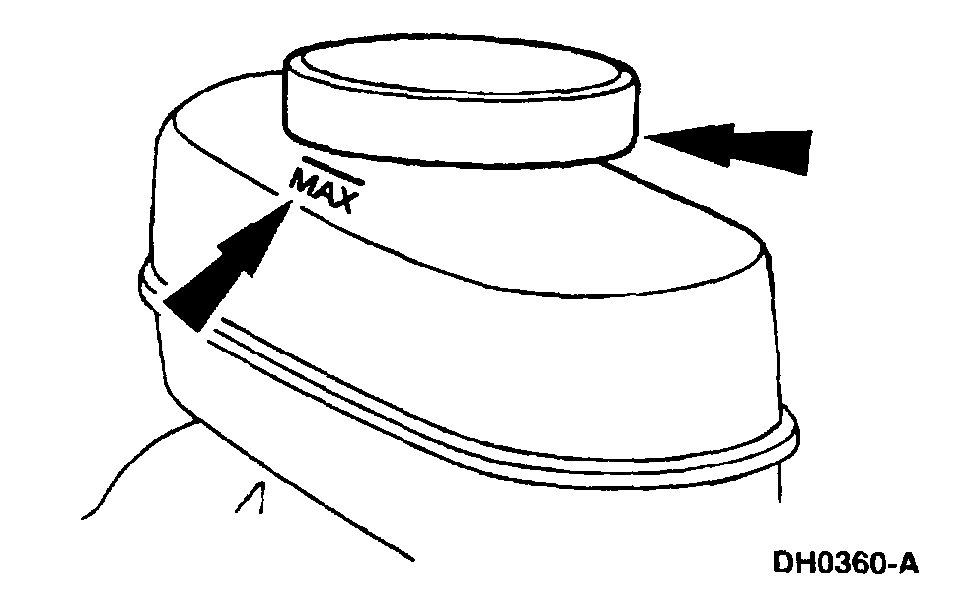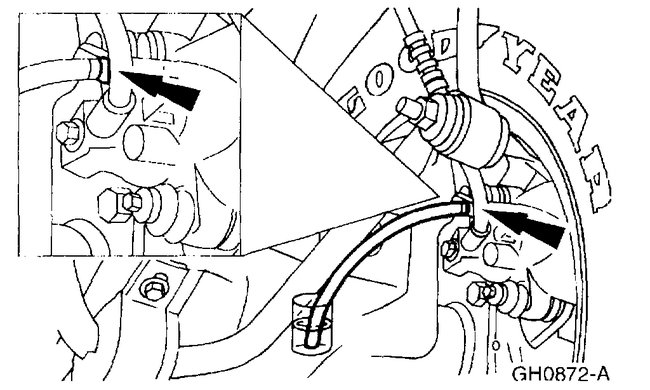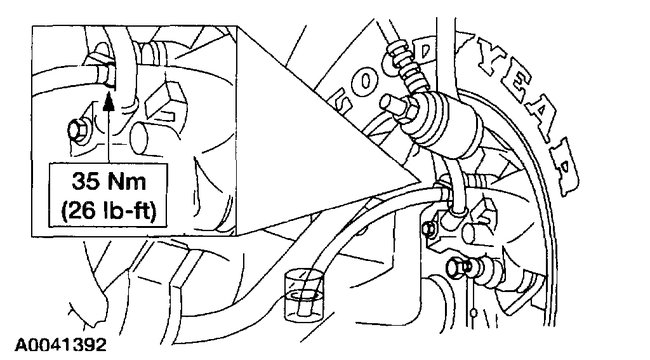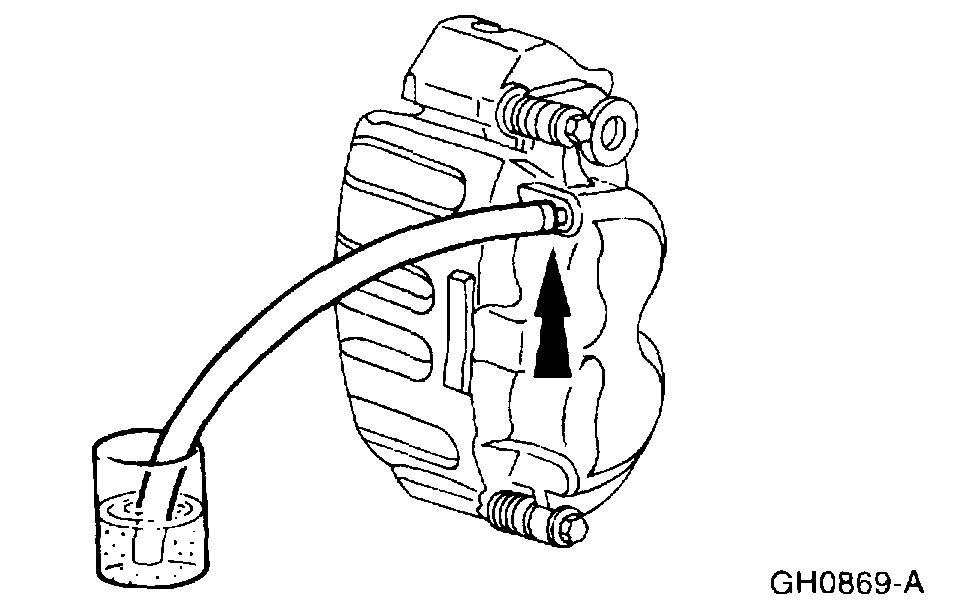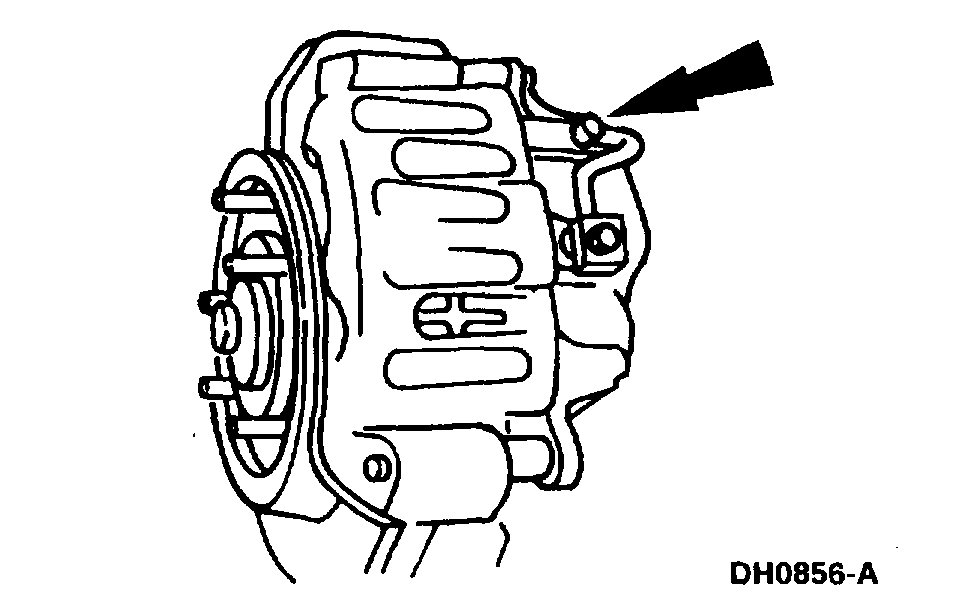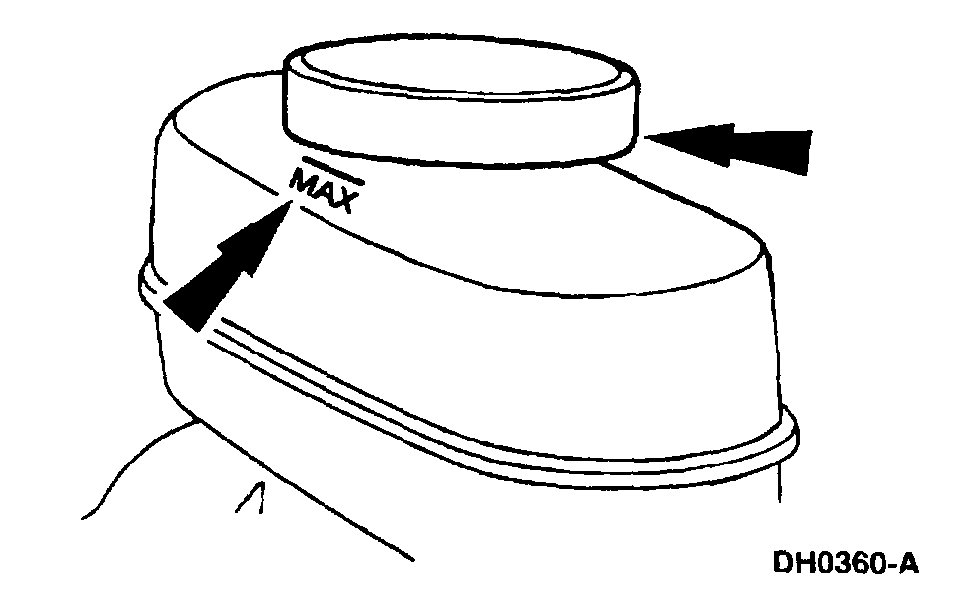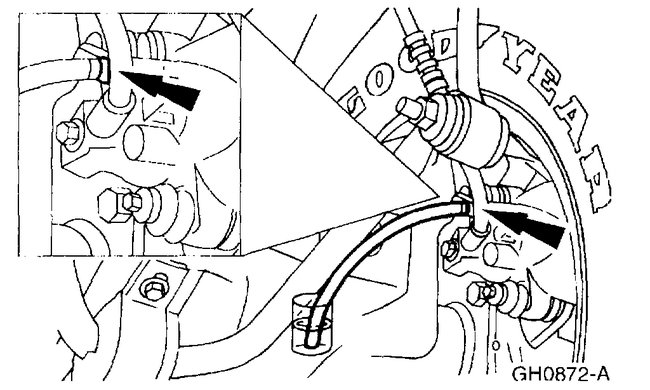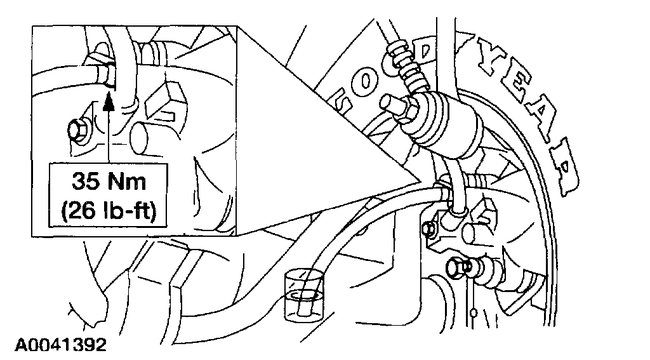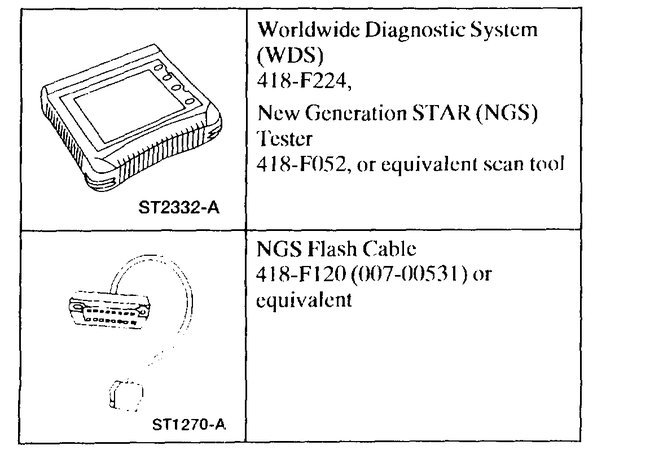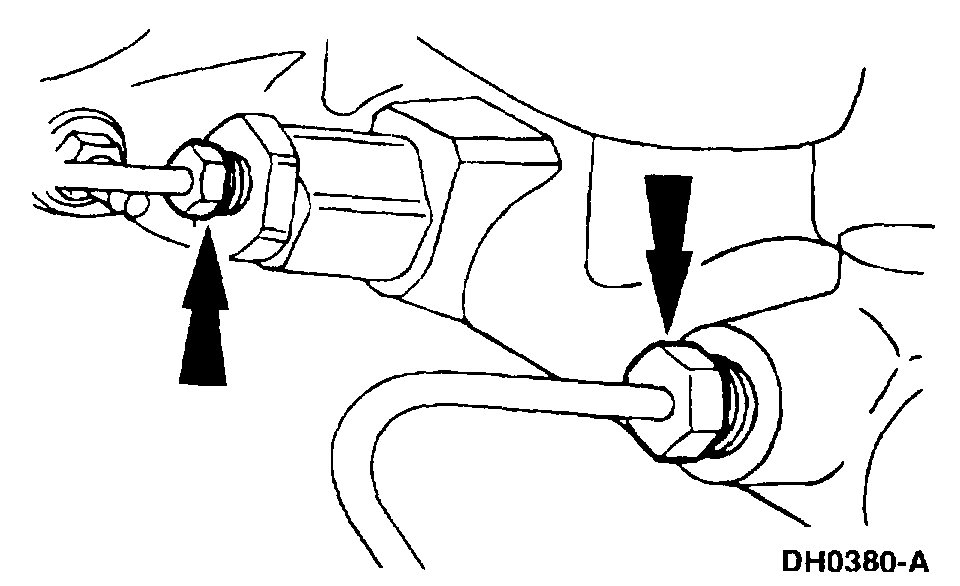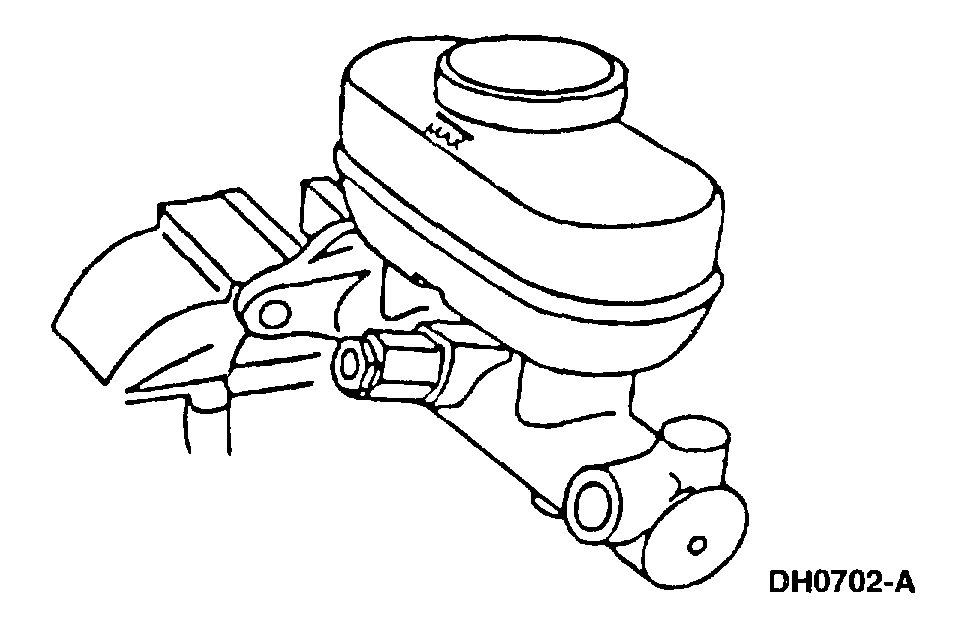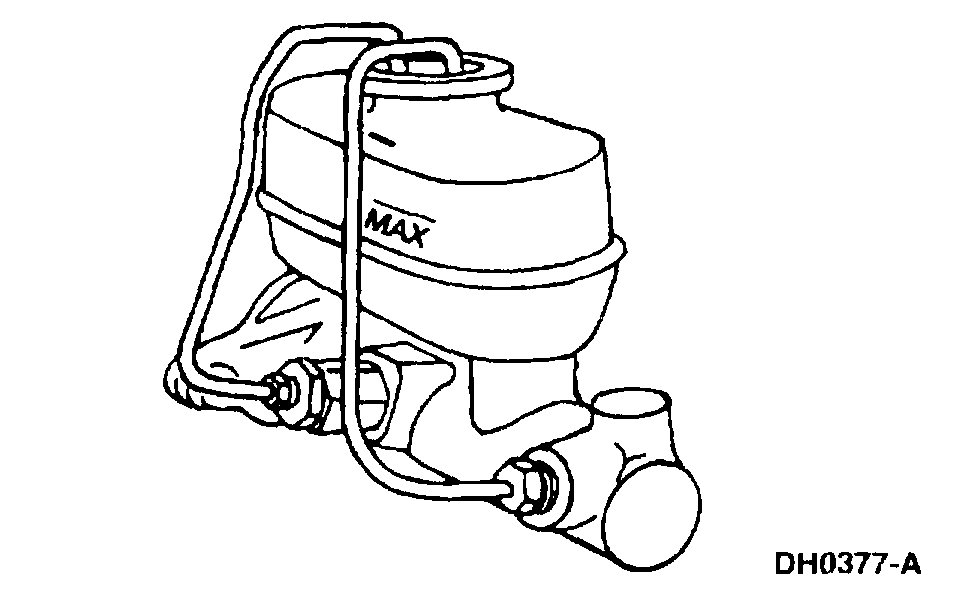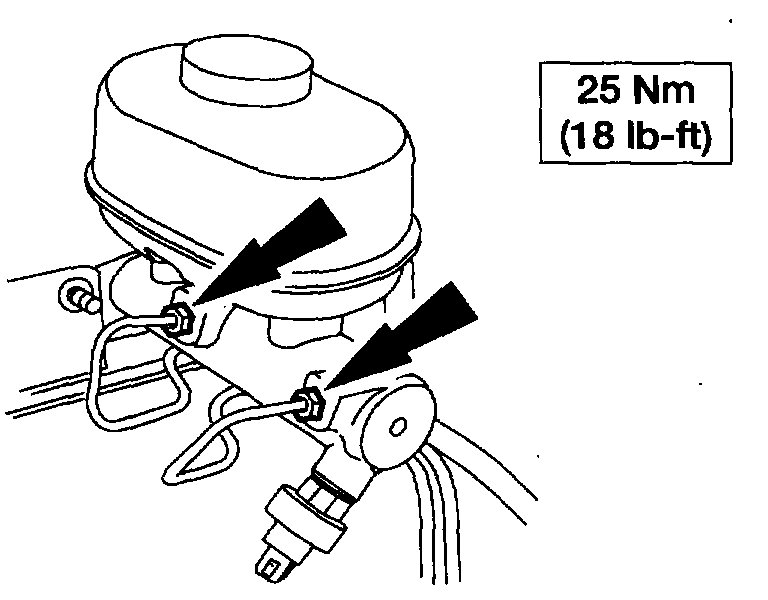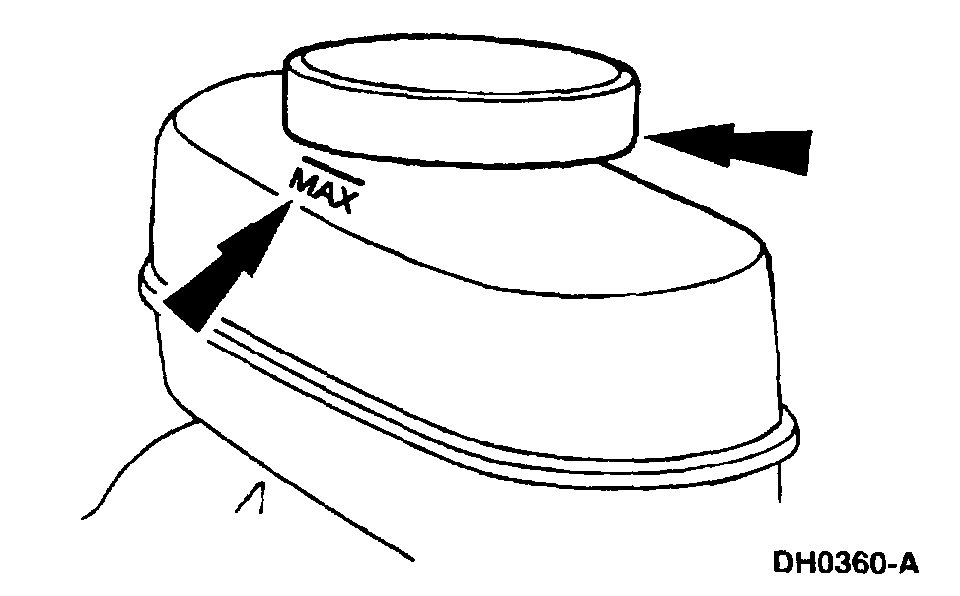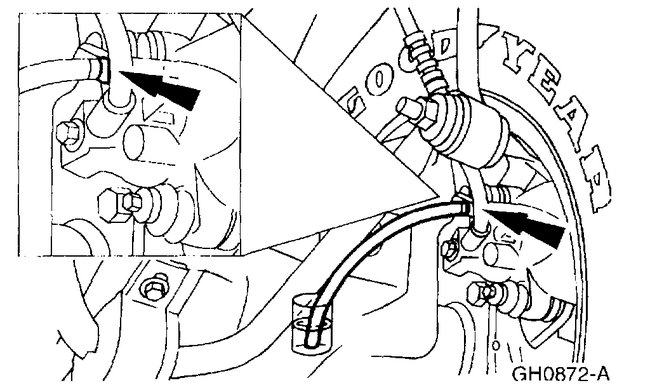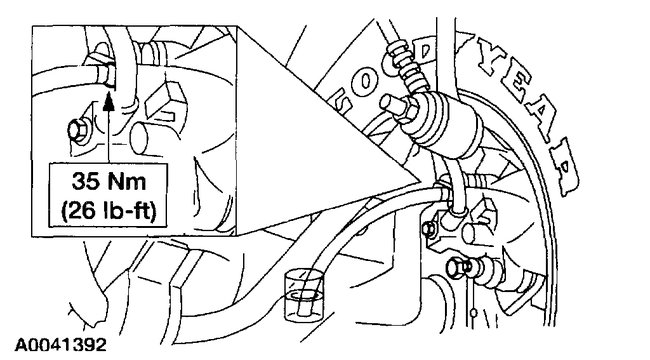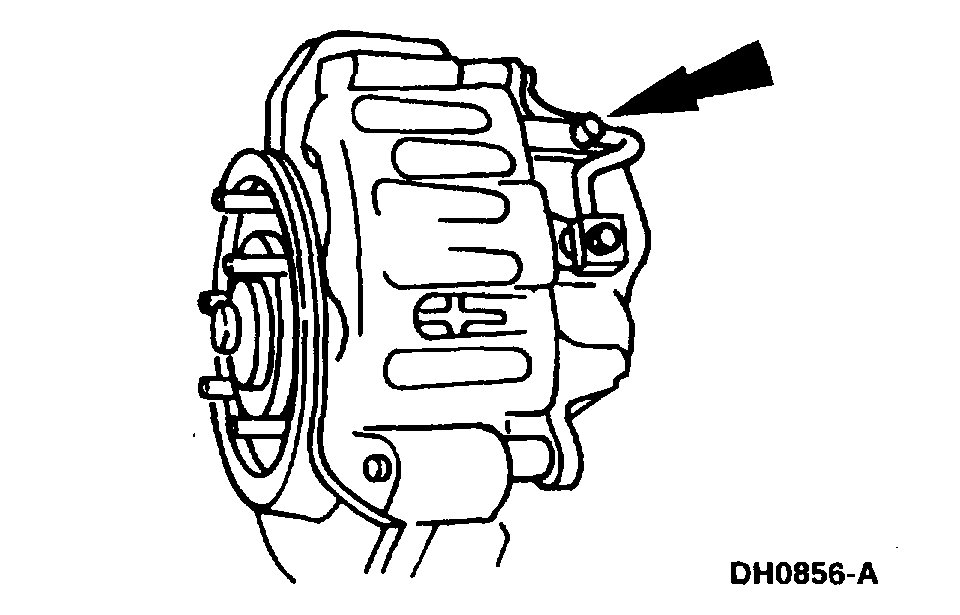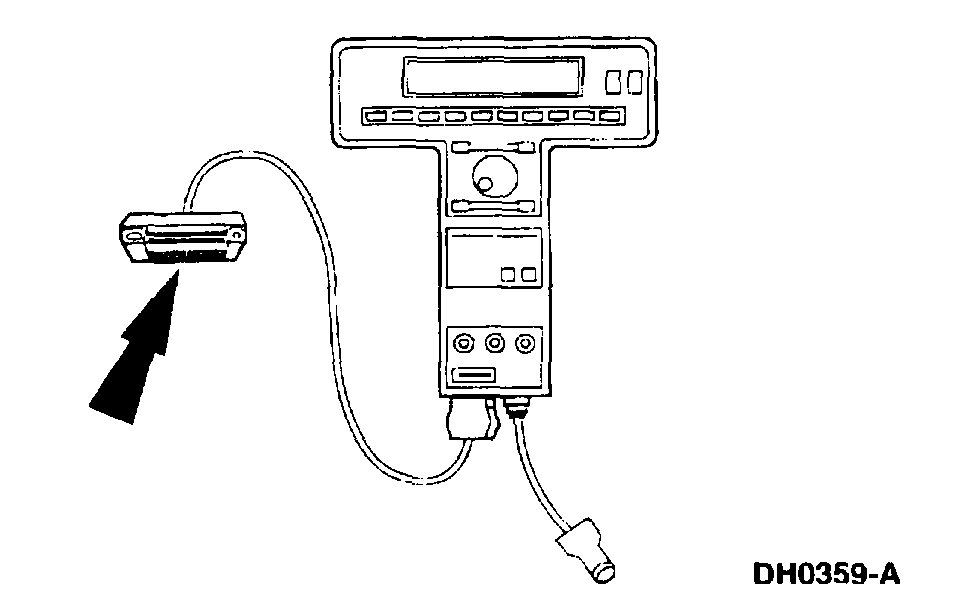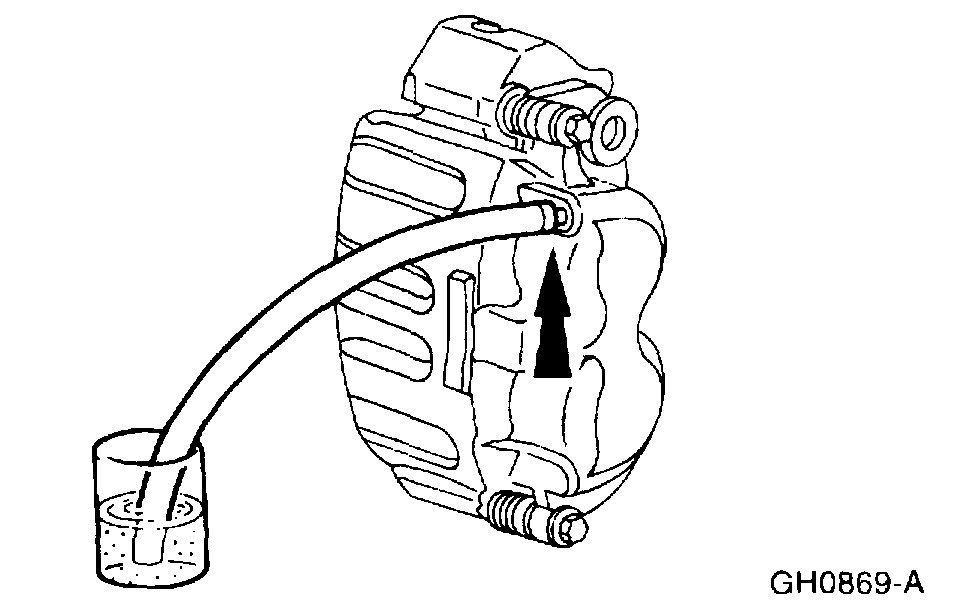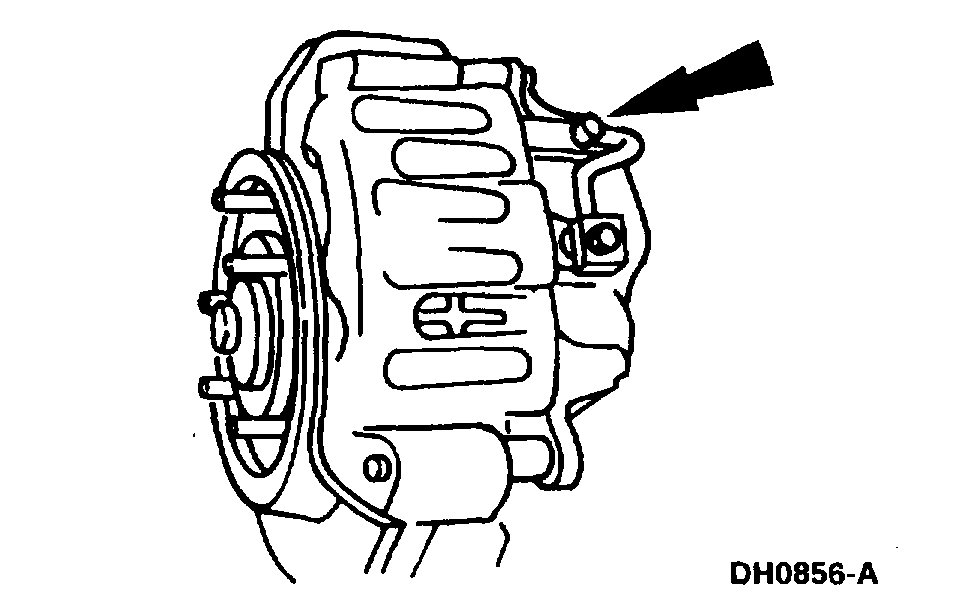Welcome to 2CarPros.
It sounds like there is still air in the system. When you get the assist from the booster, without you realizing, a lot more pressure is added to the pedal.
________________________________
Here are the directions specific to your vehicle for bleeding the brakes. The attached pictures correlate with the directions.
________________________________
2003 Ford Truck F 250 4WD Super Duty V8-5.4L SOHC VIN L
Bleeding - System
Vehicle Brakes and Traction Control Hydraulic System Brake Bleeding Service and Repair
Brake System Bleeding
Manual
WARNING: Brake fluid contains polyglycol ethers and polyglycols. Avoid contact with eyes. Wash hands thoroughly after handling. If brake fluid contacts eyes, flush eyes with running water for 15 minutes. Get medical attention if irritation persists. If taken internally, drink water and induce vomiting. Get medical attention immediately.
CAUTION: Do not allow the brake master cylinder reservoir to run dry during the bleeding operation. Keep the brake master cylinder reservoir filled with the specified brake fluid. Never reuse the brake fluid that has been drained from the hydraulic system.
CAUTION: Brake fluid is harmful to painted and plastic surfaces. If brake fluid is spilled onto a painted or plastic surface, immediately wash it with water.
NOTE: When any part of the hydraulic system has been disconnected for repair or replacement, air may get into the system and cause spongy brake pedal action. This requires bleeding of the hydraulic system after it has been properly connected. The hydraulic system can be bled manually or with pressure bleeding equipment.
Pic 1
1. Clean all dirt from and remove the brake master cylinder filler cap and fill the brake master cylinder reservoir with the specified brake fluid.
Pic 2
2. Place a box end wrench on the RH rear bleeder screw. Attach a rubber drain tube to the RH rear bleeder screw and submerge the free end of the tube in a container partially filled with clean brake fluid.
3. Have an assistant pump the brake pedal and then hold firm pressure on the brake pedal.
4. Loosen the RH rear bleeder screw until a stream of brake fluid comes out. While the assistant maintains pressure on the brake pedal, tighten the RH rear bleeder screw.
- Repeat until clear, bubble-free fluid comes out.
- Refill the brake master cylinder reservoir as necessary.
Pic 3
5. Tighten the RH rear bleeder screw.
6. Repeat Steps 2, 3, 4 and 5 for the LH rear bleeder screw.
Pic 4
7. Place a box end wrench on the RH front disc brake caliper bleeder screw. Attach a rubber drain tube to the RH front disc brake caliper bleeder screw, and submerge the free end of the tube in a container partially filled with clean brake fluid. Have an assistant pump the brake pedal and then hold firm pressure on the brake pedal.
9. Loosen the RH front disc brake caliper bleeder screw until a stream of brake fluid comes out. While the assistant maintains pressure on the brake pedal, tighten the RH front disc brake caliper bleeder screw.
- Repeat until clear, bubble-free fluid comes out.
- Refill the brake master cylinder reservoir as necessary.
Pic 5
10. Tighten the RH front disc brake caliper bleeder screw.
11. Repeat Steps 7, 8, 9 and 10 for the LH front disc brake caliper bleeder screw.
Pressure
pic 6
1. Clean all dirt from and remove the brake master cylinder filler cap and fill the brake master cylinder reservoir with the specified brake fluid.
2. NOTE: Master cylinder pressure bleeder adapter tools are available from various manufacturers of pressure bleeding equipment. Follow the instructions of the manufacturer when installing the adapter.
Install the bleeder adapter to the brake master cylinder reservoir, and attach the bleeder tank hose to the fitting on the adapter.
Pic 7
3. NOTE: Bleed the longest line first. Make sure the bleeder tank contains enough specified brake fluid to complete the bleeding operation.
Place a box end wrench on the RH rear bleeder screw. Attach a rubber drain tube to the RH rear bleeder screw, and submerge the free end of the tube in a container partially filled with clean brake fluid.
4. Open the valve on the bleeder tank.
Pic 8
5. Loosen the RH rear bleeder screw. Leave open until clear, bubble-free brake fluid flows, then tighten the RH rear bleeder screw and remove the rubber hose.
6. Continue bleeding the rear of the system, going in order from the LH rear bleeder screw to the RH front disc brake caliper bleeder screw ending with the LH front disc brake caliper bleeder screw.
7. Close the bleeder tank valve. Remove the tank hose from the adapter, and remove the adapter.
__________________________________________
Here are the directions specific to your vehicle for bleeding the MC.
2003 Ford Truck F 250 4WD Super Duty V8-5.4L SOHC VIN L
Bleeding - Components
Vehicle Brakes and Traction Control Hydraulic System Brake Bleeding Service and Repair Procedures Bleeding - Components
BLEEDING - COMPONENTS
Component Bleeding
Special Tools
pic 9
Special Tool(s)
Master Cylinder Priming-In-Vehicle or Bench
WARNING: Brake fluid contains polyglycol ethers and polyglycols. Avoid contact with eyes. Wash hands thoroughly after handling. If brake fluid contacts eyes, flush eyes with running water for 15 minutes. Get medical attention if irritation persists. If taken internally, drink water and induce vomiting. Get medical attention immediately.
CAUTION: Do not allow the brake master cylinder reservoir to run dry during the bleeding operation. Keep the brake master cylinder reservoir filled with the specified brake fluid. Never reuse the brake fluid that has been drained from the hydraulic system.
CAUTION: Brake fluid is harmful to painted and plastic surfaces. If brake fluid is spilled onto a painted or plastic surface, immediately wash it with water.
NOTE: When any part of the hydraulic system has been disconnected for repair or replacement, air can enter the system and cause spongy brake pedal action. This requires bleeding of the hydraulic system after it has been properly connected. The hydraulic system can be bled manually or with pressure bleeding equipment.
NOTE: When the brake master cylinder has been replaced or the system has been emptied, or partially emptied, it should be primed to prevent air from entering the system.
Pic 10
1. For in-vehicle priming disconnect the brake lines.
Pic 11
2. For bench priming mount the brake master cylinder in a vise.
Pic 12
3. Install short brake tubes with the ends submerged in the brake master cylinder reservoir, and fill the brake master cylinder reservoir with High Performance DOT 3 Motor Vehicle Brake Fluid C6AZ-19542-AB or equivalent DOT 3 fluid meeting Ford specification ESA-M6C25-A.
4. Have an assistant pump the brake pedal, or slowly depress the primary piston until clear fluid flows from both brake tubes, without air bubbles.
5. If the brake master cylinder is being primed at the bench, install it in the vehicle.
Pic 13
6. Remove the short brake tubes, and install the brake outlet tubes.
7. Bleed each brake tube at the brake master cylinder as follows:
1. Have an assistant pump the brake pedal, and then hold firm pressure on the brake pedal.
2. Loosen the rearmost brake tube fittings until a stream of brake fluid comes out. While the assistant maintains pressure on the brake pedal, tighten the brake tube fitting.
3. Repeat this operation until clear, bubble-free fluid comes out.
4. Refill the brake master cylinder reservoir as necessary. Repeat the bleeding operation at the front brake tube.
Four Wheel Anti-Lock Brake System (4WABS) Hydraulic Control Unit (HCU)
NOTE: This procedure only needs to be performed if the 4-wheel anti-lock brake (4WABS) hydraulic control unit (HCU) has been replaced or if air is suspected in the HCU.
Pic 14
1. Clean all dirt from and remove the brake master cylinder filler cap, and fill the brake master cylinder reservoir with the specified brake fluid.
Pic 15
2. Connect a clear waste line to the RH rear bleeder screw and the other end in a container partially filled with recommended brake fluid.
3. With the RH rear bleeder screw open, cycle the brake pedal until no more air is seen in the waste line.
Pic 16
4. Tighten the RH rear bleeder screw, and disconnect the waste line.
Pic 17
5. Repeat Steps 2, 3 and 4 for the LH rear bleeder screw, the RH front disc brake caliper bleeder screw, and the LH front disc brake caliper bleeder screw, in that order.
Pic 18
6. Connect the scan tool DCL cable adapter into the vehicle data link connector (DLC) under the dash, and follow the scan tool instructions.
7. Repeat the system bleed procedure as outlined in Steps 1 through 5.
Caliper
pic 19
1. NOTE: It is not necessary to do a complete brake system bleed if only the disc brake caliper was disconnected.
Place a box end wrench on the disc brake caliper bleeder screw. Attach a rubber drain tube to the disc brake caliper bleeder screw, and submerge the free end of the tube in a container partially filled with clean brake fluid.
2. Have an assistant pump the brake pedal (BP) and then hold firm pressure on the brake pedal.
3. Loosen the disc brake caliper bleeder screw until a stream of brake fluid comes out. While the assistant maintains pressure on the brake pedal, tighten the disc brake caliper bleeder screw.
- Repeat until clear, bubble-free fluid comes out.
- Refill the brake master cylinder reservoir as necessary.
Pic 20
4. Tighten the disc brake caliper bleeder screw. Refer to Specifications.
___________________________________
Let me know if this helps or if you have other questions.
Take care,
Joe
Images (Click to make bigger)
Friday, July 26th, 2019 AT 8:13 PM
